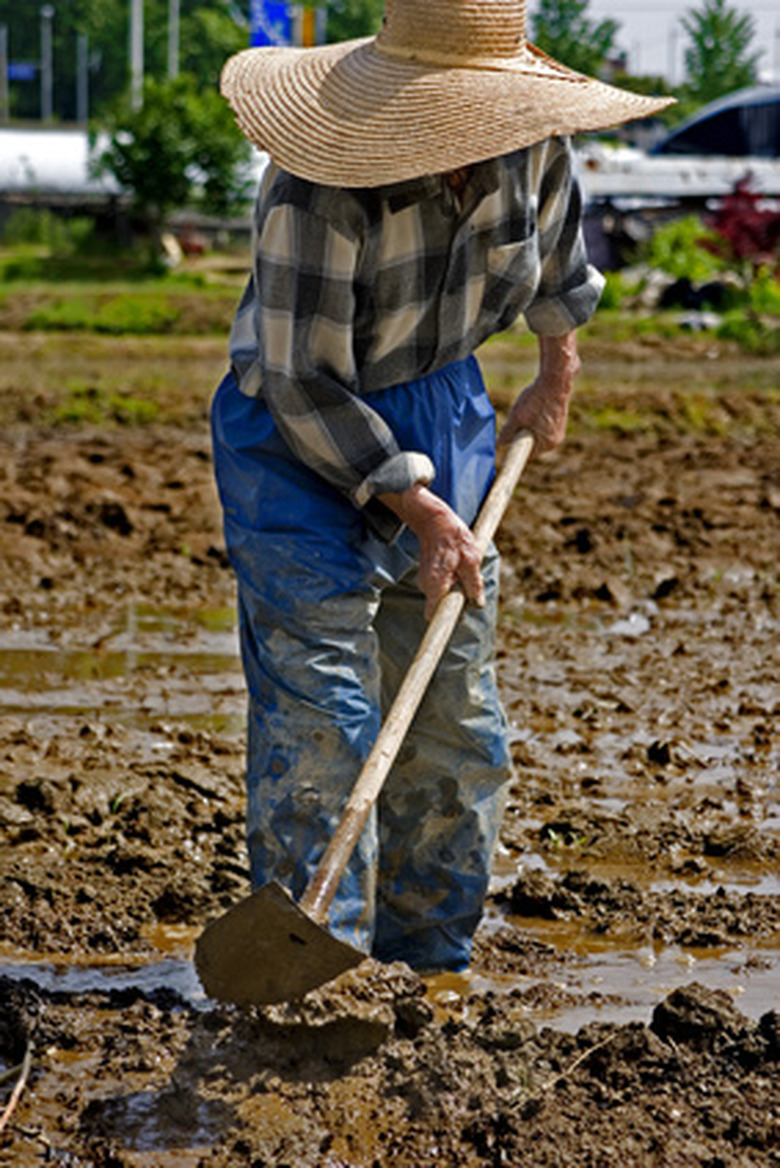The History Of The Garden Hoe
The hoe is such as basic and useful garden tool that few gardens are without one. The tool consists of a flat blade at the end of a long stick and is used for cultivating, chopping and digging. The hoe is such a practical tool that its existence dates back to the first gardens of history.
History
Evidence of the first hoes exists on cave paintings that date back to the fifth millennium B.C. The paintings show a tool that resembled a long, forked stick. Early farmers used these hoes to dig up weeds, create furrows and chop plants.
Types
Hoes from fifth century Mesopotamia were made of worked stone, bone and animal horn. By the 14th century, metal working techniques improved to the point that a hoe blade could be shaped precisely.
- The hoe is such as basic and useful garden tool that few gardens are without one.
- The hoe is such a practical tool that its existence dates back to the first gardens of history.
Significance
According to "Grit," archeologists say early hoes were custom made and were hard to come by. A broken, stolen or lost hoe would halt the cultivation and production of plants long enough to endanger a food supply and lead to starvation. Thieves of garden implements like hoes were prosecuted. Even as late as the Revolutionary War farmers offered rewards for the return of missing tools. It was common to see hoes mentioned specifically next to items such as silks and spices on ads of shipping imports.
Function
Early hoes helped farmers avoid bending or stooping to hand-pull weeds. They also helped aerate soil, create furrows or trenches, mix soil components and pile soil up among roots. This prevented stress on various joints, which helped farmers work for longer periods of time.
- According to "Grit," archeologists say early hoes were custom made and were hard to come by.
- A broken, stolen or lost hoe would halt the cultivation and production of plants long enough to endanger a food supply and lead to starvation.
Effects
Metalworkers have been able to invent variations of the basic hoe. Modern farmers can choose to use a simple hoe, or a hoe-like tool such as the grubbing axe. Heavy equipment attachments such as scraper blades also resemble the hoe.
